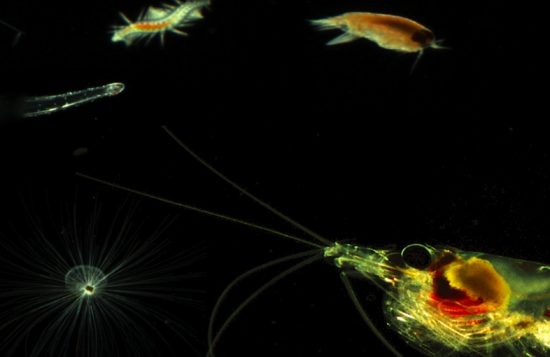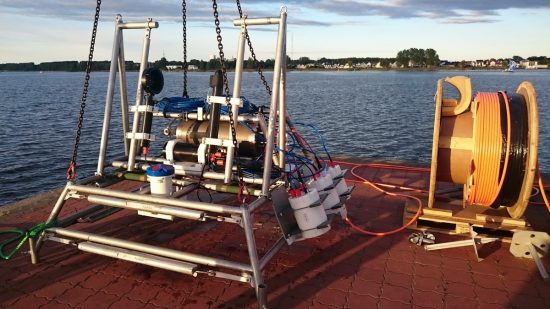





Scientists from the Thünen Institute of Sea Fisheries, Alfred Wegener
Institute (AWI) and Helmholtz-Zentrum Geesthacht (HZG) have placed an
optical-acoustic underwater observatory in the North Sea near
Helgoland. It will be used to photograph and automatically identify the
smallest marine life 24 hours a day and even under harsh conditions
when research vessels are unable to leave the harbour.
Zooplankton are microscopic creatures, fish larvae, jellyfish as well
as juveniles of many snails and echinoderms. Such creatures form the
basis of the food chain in the ocean. Their distribution and diversity
therefore affect many fish stocks and marine mammals.
The new underwater observatory, called Zooplankton-Observatory, can
automatically detect the distribution patterns of microorganisms and
particles with a high spatial-temporal resolution. It does this without
having to extract samples or specimens from the marine environment. In
addition, it can record the distribution and sink rate of small organic
particles (also known as the “snow of the oceans”). Such particles are
integral in the carbon fluxes in the oceans and therefore exert an
influence on our climate.
This new device is a combination of an Acoustic Doppler Currrent
Profiler (ADCP) and a Video-Plankton-Recorder (VPR). The latter is an
underwater camera system that can capture 15-25 high-resolution images
per second. This enables scientists to observe and identify organisms
which are at least 0.5 millimeters in size (even the gelatinous
plankton, which often goes undetected in traditional sampling methods).
The ADCP provides a three-dimensional measurement of the flow field and
measures the acoustic back-up level. With this information, the daily
or seasonal migration patterns of zooplankton communities can be
studied and migration rates can be determined.
The Zooplankton-Observatory was developed by Dr Boris Cisewski from the
Thünen Institute of Sea Fisheries and Dr Klas Ove Möller from the HZG,
with the help of specialist marine technology companies. At the end of
November 2016, AWI's Center for Scientific Diving, with the help of the
Tönning Water and Shipping Authority, brought it on board the marine
pollution control vessel Neuwerk.
The Zooplankton-Observatory complements the underwater node system that
was developed by HZG and AWI as part of the COSYNA (Coastal Observing
System for Northern and Arctic Seas) at MarGate, AWI's underwater
experimental facility off Helgoland. This underwater node is an
underwater “socket” that provides power and Internet access underwater.
It also offers the infrastructure to connect different sensor systems
and devices together and operate them remotely on a short- or long-term
basis. The node is operated by AWI scientist Professor Philipp Fischer,
in collaboration with HZG.
The Zooplankton-Observatory will complement
the measuring instruments already deployed underwater and has the
capacity to gather data for several months.
For more information see here
 Herbert
Herbert 10th December 2016
10th December 2016